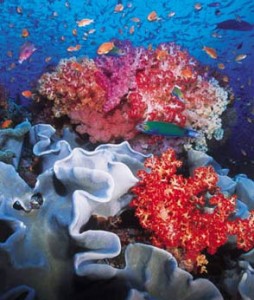United Nations University – Institute for Water, Environment and Health, Hamilton, Canada
11 Jul 2011
 Networks of biologically-connected marine protected areas need to be carefully planned, taking into account the open ocean migrations of marine fish larvae that take them from one home to another sometimes hundreds of kilometers away.
Networks of biologically-connected marine protected areas need to be carefully planned, taking into account the open ocean migrations of marine fish larvae that take them from one home to another sometimes hundreds of kilometers away.
Research published today in the international journal Oecologia sheds new light on the dispersal of marine fish in their larval stages, important information for the effective design of marine protected areas (MPAs), a widely advocated conservation tool.
Using a novel genetic analysis, researchers at the University of Windsor, Canada, and the United Nations University’s Canadian-based Institute for Water, Environment and Health (UNU-INWEH) studied dispersal and connectivity among populations of the bicolor damselfish — a species common to Caribbean coral reefs and a convenient proxy for many coral reef fish species with similar biology, including a typical 30-day larval stage.
Full news release: click here